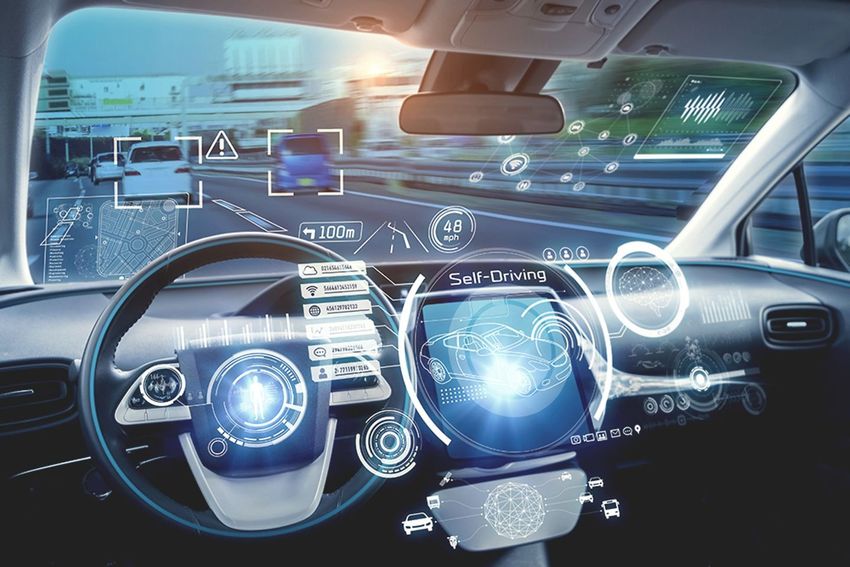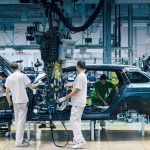The automotive industry is undergoing a transformative revolution, driven by rapid advancements in technology, sustainability goals, and changing consumer preferences. From electric vehicles (EVs) and self-driving cars to AI-powered features and alternative fuels, the innovations in the car industry are not only enhancing convenience but also redefining what mobility means. Buckle up as we take you through the most exciting and latest innovations in cars! 🔋🧠🚘
⚡ 1. Electric Vehicles (EVs) Take the Fast Lane 🌱🔌
Electric cars have moved beyond being a futuristic concept; they’re now a mainstream reality. With governments worldwide pushing for net-zero emissions, EVs have become the centerpiece of sustainable transportation.
Key Innovations in EVs:
-
Ultra-fast Charging: Companies like Tesla and Porsche are pushing the envelope with ultra-fast chargers that can add hundreds of kilometers of range in just minutes.
-
Solid-State Batteries: These next-gen batteries promise higher energy density, faster charging, and longer lifespan compared to traditional lithium-ion cells.
-
Bidirectional Charging: This tech allows EVs to supply power back to the grid or even your home, transforming your car into a portable energy hub.
🌟 Brands Leading the Charge: Tesla, Rivian, Lucid Motors, BYD, Hyundai, and Ford are all heavily investing in cleaner, greener EVs.
🤖 2. Autonomous Driving: Cars That Think and Drive Themselves 🧠🚗
Self-driving technology is no longer science fiction. Autonomous cars use a mix of AI, sensors, radar, and cameras to understand and navigate the environment.
Levels of Autonomy:
-
Level 2: Partial automation, like Tesla Autopilot or GM Super Cruise.
-
Level 4 & 5: Full automation where the car can operate without human intervention (still in development/testing).
Exciting Features:
-
Over-the-Air (OTA) Updates: Cars can now receive software improvements remotely, much like your smartphone.
-
AI Decision-Making: Advanced AI algorithms help autonomous systems make split-second decisions in complex urban settings.
📍 Example: Waymo’s self-driving taxis and Tesla’s Full Self-Driving (FSD) beta are paving the way for a driverless future.
🧑💻 3. Smart Interiors and Connected Cars 📱🎧
Today’s car interiors are transforming into digital cockpits, filled with smart features that enhance user experience and connectivity.
Innovations to Watch:
-
Voice-Controlled Assistants: Think of Alexa, Siri, or Google Assistant, but integrated into your car.
-
AR Windshields: Augmented reality displays on windshields provide real-time navigation, hazard alerts, and even immersive infotainment.
-
Digital Keys: Your smartphone can now unlock and start your car.
🚘 Connected Features: Cars communicate with traffic systems, other vehicles (V2V), and cloud platforms to deliver safer and smoother driving experiences.
🛡️ 4. Advanced Safety Features: Making Roads Safer 🚦🛑
Safety remains a top priority in modern car innovation. Thanks to new tech, cars can now avoid accidents, alert drivers to danger, and even take control to prevent collisions.
Game-Changing Safety Tech:
-
Automatic Emergency Braking (AEB): Detects obstacles and applies brakes automatically.
-
Driver Monitoring Systems (DMS): Cameras track the driver’s attention and provide alerts in case of distraction or drowsiness.
-
Cross-Traffic Alert & 360-Degree Cameras: Offers a bird’s eye view to avoid tight parking mishaps.
🧩 These features are becoming standard, even in mid-range models, thanks to increasing safety regulations worldwide.
🔋 5. Sustainable Materials and Eco-Friendly Designs 🌿♻️
Car makers are turning toward sustainability not just in fuel but in the very fabric of car construction.
Green Innovations:
-
Recycled Materials: Brands like BMW and Volvo are using recycled plastics, ocean waste, and plant-based materials in car interiors.
-
Low Carbon Manufacturing: Using renewable energy in factories and sustainable supply chains is becoming a norm.
-
Aerodynamic Designs: Streamlined shapes help reduce drag and increase energy efficiency, especially for EVs.
🌎 The focus isn’t just on driving green but building green too!
🛰️ 6. Vehicle-to-Everything (V2X) Communication 📡🔉
One of the most futuristic developments is V2X – which allows vehicles to communicate with everything around them: traffic signals, road infrastructure, and other vehicles.
Benefits of V2X:
-
Improved Traffic Flow: Real-time traffic updates and route optimization.
-
Reduced Accidents: Cars can warn each other about potential dangers.
-
Smart Cities Integration: Seamless communication with city infrastructure for better coordination and less congestion.
⛽ Imagine driving through a city where every traffic light and vehicle works together—like a well-orchestrated symphony!
🔭 The Road Ahead: What’s Next? 🚀🚘
The car of the future will likely be:
-
Electric 🔋
-
Self-Driving 🤖
-
Connected 📶
-
Eco-Friendly 🌿
-
AI-Enhanced 🧠
Tech giants like Apple, Google, and Amazon are also joining the auto race, blurring the lines between tech and transportation. Meanwhile, traditional automakers are reinventing themselves as mobility companies, not just car manufacturers.
🏁 Conclusion: A New Era of Driving 🚗✨
The latest innovations in cars are not just about getting from point A to B—they’re about transforming the entire journey. From smart, sustainable engineering to AI-driven autonomy, the future of automotive tech is intelligent, interactive, and inspiring.


